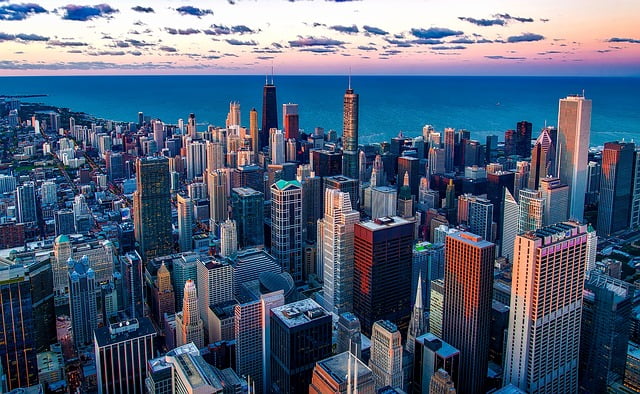Preserving the rich history and architectural beauty of a city is a task of paramount importance. In a city like Chicago, where the skyline is adorned with iconic structures that stand as testaments to the past, maintaining the charm of historic properties is not only a responsibility but also a privilege. The process of preserving these properties involves careful consideration and adherence to regulations, particularly when it comes to obtaining a building permit. In this article, we will delve into the world of historic preservation and explore how to navigate building permits for historic properties in the captivating city of Chicago.

Table of Contents
The Significance of Historic Preservation
Historic preservation is more than just preserving physical structures; it’s about safeguarding the stories, culture, and identity of a community. Historic properties connect us to the past, serving as tangible reminders of the events, people, and architectural styles that have shaped our cities. In Chicago, a city with a storied history that includes the Great Fire of 1871 and the birth of the skyscraper, historic preservation takes on a particularly special significance.
Preservation efforts often extend to designated historic districts, individual landmarks, and even buildings with architectural, cultural, or historical significance. These structures contribute to the city’s unique character and are treasured by residents and visitors alike.
The Role of Building Permits
Building permits play a crucial role in maintaining the delicate balance between preservation and progress. These permits are required for various construction, renovation, and restoration projects to ensure that they comply with safety codes, zoning regulations, and historic preservation guidelines. When it comes to historic properties, obtaining building permits is a nuanced process that involves navigating additional layers of approval to safeguard the property’s historical integrity.
Navigating Building Permits for Historic Properties
1. Understand the Regulations
The first step in obtaining a building permit for a historic property is to familiarize yourself with the regulations specific to historic preservation in Chicago. Different types of preservation designations, such as Chicago Landmarks and National Register of Historic Places listings, come with their own sets of guidelines. Understanding these regulations is essential to ensure that your project aligns with the preservation standards.
2. Consult with Preservation Professionals
Before embarking on any major project, it’s advisable to consult with preservation professionals who are well-versed in historic architecture and regulations. Architects, historic preservation consultants, and attorneys with experience in this field can provide invaluable guidance. They can help you navigate the permitting process, ensuring that your project meets preservation standards while complying with building codes.
3. Develop a Detailed Plan
A well-thought-out plan is essential for any construction or renovation project, but it’s particularly vital when dealing with historic properties. Your plan should detail the scope of the project, materials to be used, and the overall design. This plan will be submitted as part of the permit application and will be carefully reviewed to ensure it aligns with preservation requirements.
4. Submit a Thorough Application
When applying for a building permit for a historic property, your application should be comprehensive and include all required documents. This typically includes architectural drawings, your project plan, details of proposed changes, and any other information that demonstrates your project’s compliance with preservation standards.
5. Attend Permit Review Meetings
In many cases, particularly for significant projects, permit review meetings are held where you present your project to preservation professionals and officials. This is an opportunity to explain your project’s merits and how it adheres to preservation guidelines. Be prepared to address questions and concerns from the review board.
6. Adapt as Necessary
During the review process, you may receive feedback and requests for modifications to your project. It’s important to approach this phase with flexibility and a willingness to adapt your plans while keeping the historical integrity intact. Working collaboratively with preservation experts can help strike the right balance between preservation and modern needs.
7. Obtain Necessary Approvals
In some cases, obtaining a building permit for a historic property may require approval from multiple entities, including local preservation commissions and relevant state agencies. Each entity has its own review process, so patience is key. Your preservation consultant can guide you through this intricate web of approvals.
8. Execute with Care
Once you’ve obtained the necessary permits and approvals, it’s time to execute your project. Whether it’s restoring a historic façade or renovating the interior, ensure that the work is carried out with meticulous attention to detail. Using appropriate materials and craftsmanship is crucial to maintaining the property’s authenticity.
9. Regular Inspections
Throughout the construction or renovation process, expect inspections to ensure that the work aligns with the approved plans. These inspections are designed to catch any deviations from the permit and to ensure that the historic elements are being appropriately preserved.
10. Completion and Compliance
Once the project is completed, a final inspection will be conducted to ensure that the work has been carried out as approved. It’s essential to demonstrate that the project complies with the permit, preserving the historic property’s significance while meeting modern safety standards.
The Reward of Preservation
Navigating building permits for historic properties in Chicago can be a complex and time-consuming process. However, the rewards of preservation are immeasurable. By preserving historic properties, we honor our past, enrich our present, and create a legacy for future generations. The city’s skyline tells a story, and each historic property is a chapter waiting to be cherished.
As stewards of history, it’s our responsibility to approach preservation with dedication and respect. Navigating the permitting process with care ensures that the story of Chicago continues to unfold through its architectural treasures. So, whether you’re considering a restoration, renovation, or adaptive reuse project, remember that every effort you make contributes to the vibrant tapestry of this remarkable city.
Conclusion
Historic preservation is a delicate dance between safeguarding the past and embracing the future. In Chicago, a city known for its architectural wonders, the process of obtaining building permits for historic properties requires meticulous attention to detail and a deep appreciation for the significance of preservation. By understanding the regulations, enlisting the expertise of preservation professionals, and navigating the intricate approval processes, we can ensure that the charm and character of historic properties remain intact for generations to come. As we continue to write the history of our cities, let us do so with a commitment to honoring our heritage and shaping a vibrant future.





